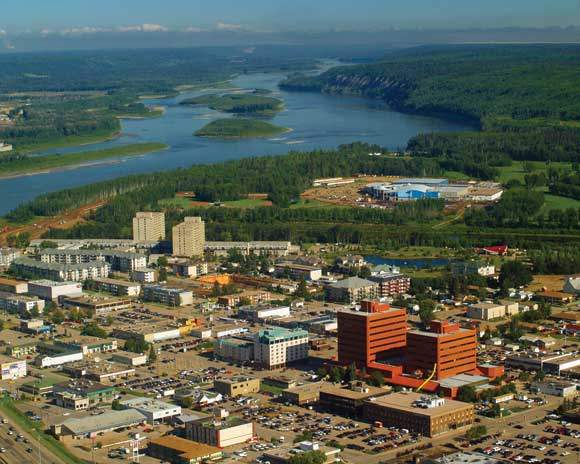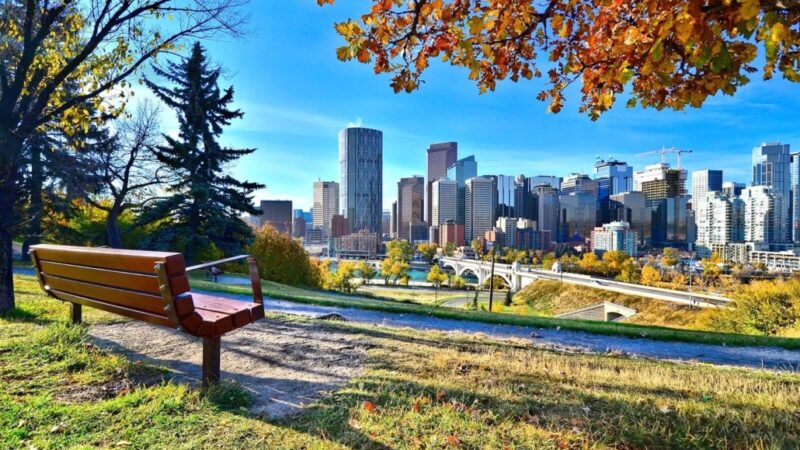Fort McMurray

Fort McMurray
Fort McMurray is part of the Wood Buffalo Municipality – largest in North America and considered to be a world leader in the oil business. It has also been noted that Fort McMurray’s two oil sands plants collectively produce as much, if not more oil than the Middle East. With the community growing at about 60,000 residents, there are also a number of other communities in the area tied in to the prosperity of the region.
Draper
Draper for example is situated 12 kilometres south of Fort McMurray. The growth of Draper is attributed to the McMurray Asphaltum and Oil Company – a quarry that was opened in 1922 by Thomas Draper. The population in Draper has grown steadily, and up to a few years ago had a count of 254 residents who primarily live on properties running along the Clearwater River. Utilities and services for Draper residents are from Fort McMurray.
Anzac
Another small community southeast of Fort McMurray is Anzac. This hamlet on the western shore of Willow Lake, from which it was originally named, has its beginnings in 1917, and renamed after the Australia and New Zealand Army Corps who were surveying the region during the First World War. An American Army base was constructed on Stoney Mountain during the Second World War. This region has seen growth for its 785 residents – from the 2010 census; and has grown in tandem with Fort McMurray and the oil industry – benefitting greatly from this relationship.
Gregoire Lake Estates
Another community nestled around Willow Lake is Gregoire Lake Estates; close to Anzac and the Gregoire Lake Provincial Park. Community services are through Anzac for the 248 people living there. There are no commercial developments in Gregoire Lake Estates.
Conklin
Southeast of Fort McMurray and in the southern most part of the Wood Buffalo Regional Municipality is the community of Conklin. Most of the 337 residents are of Metis heritage. Both residents and visitors alike enjoy the facilities and Recreation Resort of Christina Lake.
Janvier
The community of Janvier is largely Metis, and home to Chipewyan Prairie Dene First Nation located south of Fort McMurray. Access is via the Alberta Highway 881 as well as by plane and access to a small airstrip. The population in Janvier is 195 (2010 Census).
Saprae Creek
Another community south of Fort McMurray is Saprae Creek, which is the third largest community of the Regional Municipality of Wood Buffalo. With much forested land, Saprae Creek was established in 1987, and situated at the crest of the Clearwater River Valley. Residents commute to Fort McMurray to work, which is where commercial and community services are located. Vista Ridge is a recreational facility for winter activities.
Lac La Biche
Lac La Biche enjoys over 100 lakes, numerous beachside campsites and accommodation, and is located in the Northeast. Its wilderness, old growth forests, wildlife and recreational opportunities make it a popular destination for visitors. The business community is strong economically. Originally settled for the fur trade over 200 years ago, the main industries today are oil and gas, agriculture, forestry and tourism. Economic growth in Lac La Biche has put this community on the map as a hub for business with potential for even more expansion.
Fort Mackay
Fifty-eight kilometers north of Fort McMurray is the community of Fort Mackay. It is located on the banks of the Athabasca River. The economy is focused around the development of the Athabasca oil sands. Access is either from Highway 63 or service through the Fort MacKay Horizon Airport. The First Nations form the majority of local residents, as well as transient workers to the oil sands. Industry also includes forestry, hunting and trapping.
Fort Chipewyan
Other communities north of the Regional Municipality of Wood Buffalo include Fort Chipewyan, second largest community in the Municipality, and located on the northwest shore of Lake Athabasca. Many residents are Mikisew Cree First Nation, Athabasca Chipewyan First Nation and Metis. Fishing and hunting are two activities still enjoyed in this region.
Fort McMurray has the benefit of having a number of communities large and small around it. Diversity of commerce and tourist facilities and opportunities brings people to work and play together to create mutually sustaining and thriving communities.









